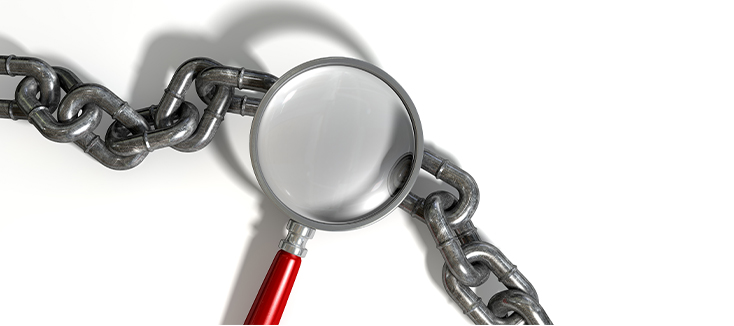Having just the right tool for any given job is essential to success. It’s no different when you’re considering purchasing an automated TEE ultrasound probe reprocessor for your facility. At CS Medical, we recognize that every facility has different preferences and needs, so we provide several state of the art options to take into consideration:
Similarities
To begin, it might be useful to outline what these three units have in common.
All three provide consistent and reliable high-level disinfection to one transesophageal echocardiogram (TEE) ultrasound probe at a time. They each require the same utilities for installation: a dedicated GCFI outlet, a water source, and a drain. Each of these comes equipped with a vapor management system, keeping users safe from harmful fumes. All three provide users with a printed record at the conclusion of each cycle and maintenance event. Lastly, all three units have been cleared by the US FDA.
Differences
Between the three units there are several distinctions.
The TD 200 is distinct from the other two units in a few important ways. First, the TD 200 only takes three minutes for disinfection time while the TD 100 and TEEClean each require five minutes. The TD 200 uses a peracetic acid based TD-12® AquaCide® high-level disinfectant, while the TD 100 and TEEClean utilize glutaraldehyde based TD-5® or ortho-phthalaldehyde (OPA) based TD-8® high-level disinfectants. As a result, the TD 200 requires that users perform MRC verification of the disinfectant while the TD 100 and TEEClean require no MRC verification.
TEEClean also has some key features that set it apart. The most significant difference is that TEEClean cleans and disinfects TEE probes, unlike the other two which only disinfect. TEEClean also digitally retains up to 15,000 cycle records which can be recalled at any time and printed from the TEEClean’s onboard printer or transferred to a USB for desktop printing. Each TEEClean is equipped with a 0.005 micron water filter whereas the filter is optional on TD 100 and TD 200. TEEClean is also outfitted with a seven-inch color LCD touch screen which presents users with visual guides on how to operate the system.
For more details on each of these units or a live demo, please feel free to contact our team at 877‑255‑9472 or via email at sales@csmedicalllc.com.
| TEE Probe Automated Reprocessor Comparison | |||
|---|---|---|---|
| High Level Disinfection Time | |||
| High Level Disinfection Time | 5 minutes with TD-5 or TD-8 | 3 minutes with TD-12 Aquacide | 5 minutes with TD-5 or TD-8 |
| Number of probes disinfected at a time | |||
| Number of probes disinfected at a time | 1 | 1 | 1 |
| Number of probes cleaned at a time | |||
| Number of probes cleaned at a time | 0 | 0 | 1 |
| Bedside cleaning required | |||
| Bedside cleaning required | Yes | Yes | Yes |
| Works on PC, Mac & mobile | |||
| FDA Clearance | K160921 | K192228 | K182891 |
| Manual cleaning in sink/basin required prior to probe insertion | |||
| Manual cleaning in sink/basin required prior to probe insertion | Yes | Yes | No |
| Barcode Scanner & Automated Data Capture | |||
| Barcode Scanner & Automated Data Capture | No | No | Yes |
| Records Leakage Test Results | |||
| Records Leakage Test Results | No | No | Yes |
| Information storage & retrieval | |||
| Information storage & retrieval | No | No | 15,000 cycle records stored |
| Utilities required | |||
| Utilities required | dedicated GFCI outlet, cold water, drain | dedicated GFCI outlet, cold water, drain | dedicated GFCI outlet, cold water, drain |
| User interface | |||
| User interface | membrane keypad | membrane keypad | scanner and 7" color LCD touch screen |
| Data Entry | |||
| Data Entry | manual | manual | manual/barcode scanner |
| Printed record at conclusion of cycle | |||
| Printed record at conclusion of cycle | Yes | Yes | Yes |
| Vapor management system | |||
| Vapor management system | Yes, unit and drain | Yes, unit and drain | Yes, unit and drain |
| HLD MRC Verification Required | |||
| HLD MRC Verification Required | No | Yes | No |
| Disinfectant usage | |||
| Disinfectant usage | Usage through expiration date (12 mo.) | Usage through expiration date (18 mo.) | Usage through expiration date (12 mo.) |
| Heating Method | |||
| Heating Method | Heating element monitored by temperature sensors | Heating element monitored by temperature sensors | Heating element monitored by temperature sensors |
| Bottle Disposal | |||
| Bottle Disposal | No neutralization required | No neutralization required | No neutralization required |
| Filtered Rinse Water | |||
| Filtered Rinse Water | Optional | Optional | 0.005 micron or 5 nanometer |
| Complete System Disinfection | |||
| Complete System Disinfection | no | no | Yes |


